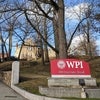Endowments for Central Mass. colleges surged in 2013-14
For colleges in Central Massachusetts and around the country, the 2013-2014 academic year put the recession in the rear-view mirror.
Figures from the National Association of College and University Business Officers (NACUBO) showed most of the schools’ endowments achieved double-digit percent gains in market value over the previous academic cycle, helped by returns on investments.
Endowment funds returned an average of 15.5 percent nationally in fiscal 2014 (July 1, 2013 to June 30, 2014) for the 832 institutions NACUBO surveyed. That was up from 11.7 percent the year before, after rebounding from fiscal 2012’s -0.3 percent.
Across the U.S., schools put more emphasis on risk management for their endowments, a NACUBO report states. John S. Griswold, executive director of the Commonfund Institute, told the NACUBO: “Institutions appear to be remaining vigilant with an eye to avoiding a repetition of their experience in the financial crisis of 2007-2009.”
Clark has ‘recovered well’
“In our case,” said James E. Collins, Clark University’s chief investment officer, “we have recovered well from the recession/market implosion. Our current valuation is over $400 million, and before the 2008-09 drop, it had reached $290 million, so we are now well past that previous high point.”
Financial officers such as Collins mind the dollars that keep everything else happening on a busy campus. A school’s endowment, built over time and tapped only sparingly, is the sum of the donations and other financial assets intended to support an institution for the long term. Growing it is hard work, although an improving economy helps.
But what might be less obvious is that spending from the endowment is also hard work.
Colleges have a lot to balance. They want to attract the best faculty and students, keep infrastructure up, and support research that will add to their reputation and relevance. But income from the endowment has to be reliable and available for leaner years. That’s why schools don’t like to touch the vast majority of those millions that may seem so spendable to outsiders and families struggling to pay tuition.
Collins explained how it works at Clark. The Worcester university gets about 15 percent of its annual operating budget from endowment investment income; it doesn’t spend from the principal. Roughly, that depletes the endowment by about 5 percent. Tuition and fees provide the bulk — close to three-fourths — of the operating budget, with the final 10 to 15 percent coming from charitable gifts, sponsored research grants and other sources.
The endowment, in short, is an investment vehicle. At most schools, it contributes only a modest fraction of a college or university’s operating income.
What endowment income is spent tends to go to donor-directed uses: financial aid, usually, or to support a designated faculty post or other cause.
At Clark, the largest use of the endowment is for financial aid, Collins said.
“Those funds are critical in ensuring that we can continue to enroll a group of students from diverse socioeconomic backgrounds,” he noted in an email interview.
A sudden decision by the board of directors at Sweet Briar College, in Lynchburg, Va., to close this August illustrates the financial complexities that can come to bear. The small, all-female school has a large endowment, more than $80 million, but contributors had attached strings to much of the money.
Recently, according to Inside Higher Ed, Sweet Briar had been running in the red.
But no such problems are in sight for Central Massachusetts colleges and universities.
“Clark is financially healthy, and our debt is rated A+ by Standard & Poor’s,” Collins said. “Although we operate on a carefully budgeted narrow margin between revenues and expenses, we have not incurred operating deficits for a very long time.”
Highest endowment: Holy Cross
The College of the Holy Cross in Worcester, at $726 million as of last June 30, has the highest endowment of Central Massachusetts schools, and taps only about 4.5 percent of it a year. As at Clark, the endowment supports about 15 percent of the school’s operating budget, with much of the money going to financial aid. The fund provides the second largest source of revenue for Holy Cross after tuition, and is “critical in helping to manage tuition and to maintain our need-blind, full-need financial aid policy,” according to Timothy M. Jarry, Holy Cross’ chief investment officer.
In an email interview, Jarry said about 25 to 30 percent — $6 million to $7 million — of endowment income goes to financial aid every year, part of the $46 million awarded last year. “The rest of the endowment spending helps to offset other expenses that enable us to offer the additional financial assistance,” he said.
Tricia M. Oliver, spokeswoman for Anna Maria College in Paxton, said, “Although growing our $3.6 million endowment is important, paramount to that is our strategy to invest in our students by providing enhanced scholarship and financial aid” through the operating fund.
Though endowments have weathered the recession, other forces are hitting higher education: rising costs, along with demands that degrees lead to good jobs. Colleges know they must plant seeds for the future, while being nimble now.













0 Comments